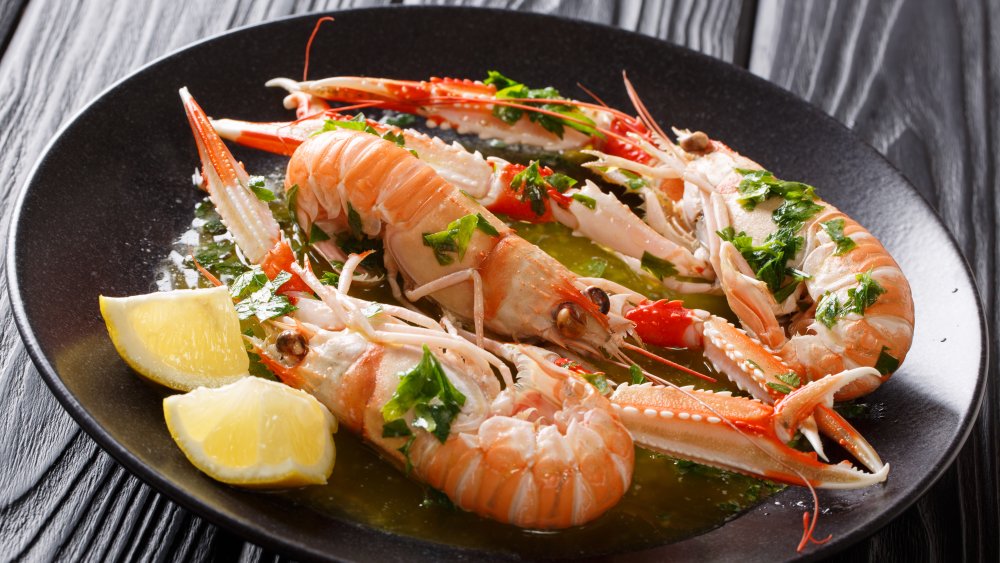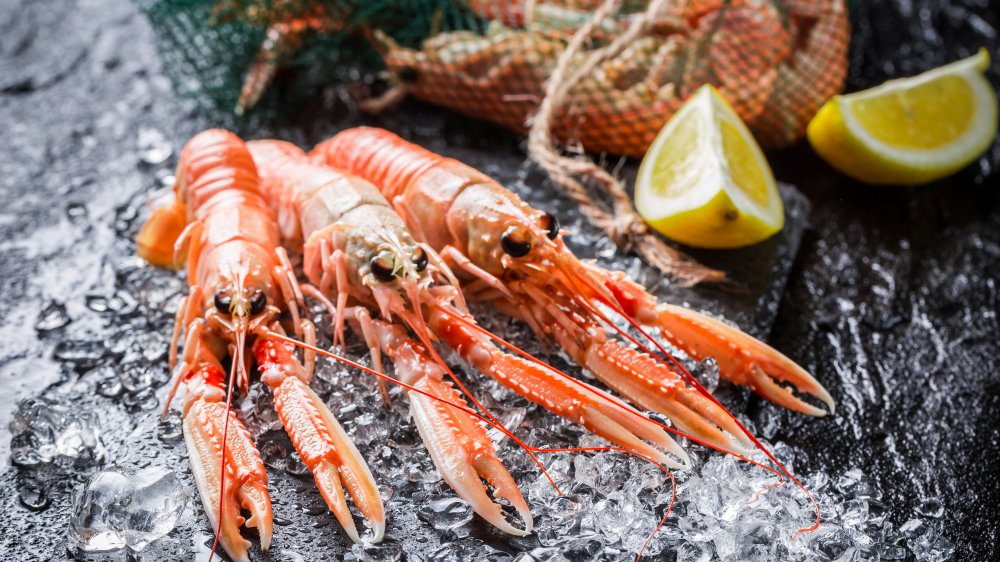What Are Langoustines And What Do They Taste Like?
In the past, when you dined at an upscale seafood restaurant you would see items like caviar, lobster, and oysters on the menu. Today? You'll find another small crustacean: langoustines. At first look, they appear to be smaller lobsters, or in some cases, langoustines may look like bigger shrimp. According to Bon Appetit, langoustines are closer to lobsters than they are to shrimp as they are within the same genus family as lobsters. But, what are they really?
Food Network explains that when thinking of langoustines, it's best to see them as the in-between for crayfish and lobsters. Unlike crayfish, who dwell in freshwater rivers and lakes, langoustines are found in saltwater seas and oceans. They are much smaller than lobsters, as they grow to a max of 10 inches. Langoustines are also a brighter and lighter shade of orange but do not change color when they are cooked, unlike the lobster, which turns a shade of red.
What do langoustines taste like?
For langoustines, the journey from sea to table can be a precarious one, which adds to their allure and helps explain why many believe them to be a coveted food prize. Langoustines, also known as Norway lobster and the Dublin Bay prawn, according to The Daily Meal, are found in the frigid waters of the northeastern Atlantic Ocean, specifically around the Norwegian, Scottish, and Icelandic coast. Because langoustines are found in cold water their meat is sweeter than many of their crustacean counterparts. Why? Sciencing explains that when crustaceans are found in cold water, their meat is whiter, sweeter, and firmer, compared to its warm water crustacean cousins. Cold-water crustaceans can often have a fishier taste as well.
Now, for the precarious part of the story. Langoustines can be very fickle. According to Bon Appetit, if they aren't properly packed, the meat can go bad fast. They have to be overnighted from remote places and have to be packaged individually because seeing another langoustine can stress them out causing the meat to "autoconsume" and turn black and gross. Because of this, langoustines are normally expensive and served in small portions. Live langoustines can cost about $37.80 per pound while live lobsters can go for $15.80 per pound.

